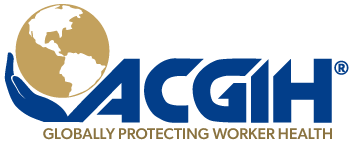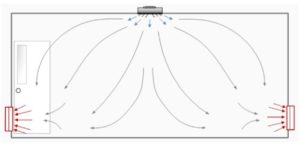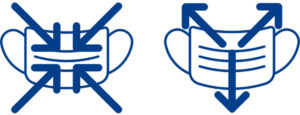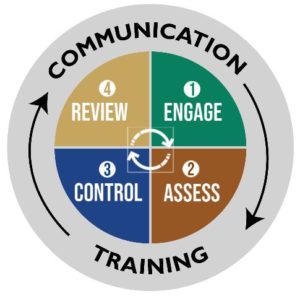COVID-19 Resources
According to the CDC, COVID-19 is a respiratory disease caused by SARS-CoV-2, a new coronavirus discovered in 2019.
“The principal mode by which people are infected with SARS-CoV-2 (the virus that causes COVID-19) is through exposure to respiratory fluids carrying infectious virus. Exposure occurs in three principal ways: (1) inhalation of very fine respiratory droplets and aerosol particles, (2) deposition of respiratory droplets and particles on exposed mucous membranes in the mouth, nose, or eye by direct splashes and sprays, and (3) touching mucous membranes with hands that have been soiled either directly by virus-containing respiratory fluids or indirectly by touching surfaces with virus on them.”
As many are returning to their traditional workplace, OEHS professionals are tasked with providing an environment which minimizes risk. In 2020 ACGIH formed the Pandemic Response Task Force. Led by Dr. Lisa Brosseau, the task force began compiling resources and producing fact sheets to highlight the importance of infectious aerosol inhalation and describe tools for prioritizing risks and selecting appropriate controls.
Complimentary ACGIH White Papers Series –
Ventilation for Industrial Settings During the COVID-19 Pandemic – (July 2021) – Coauthored with ASHRAE, this comprehensive White Paper includes expert advice from ASHRAE’s esteemed Technical Committee: 9.2 Industrial Air Conditioning, while also providing an FAQ section by topic along with an intensive list of resources.
Engineering Controls for Bioaerosols in Non-Industrial/Non-Healthcare Settings – (June 2021) – Presented by ACGIH’s Bioaerosols Committee, this impactful White Paper addresses control of bioaerosols transmission through ventilation and other engineering controls with a special focus on office buildings, schools, public assembly, theaters, and governmental buildings.
Ventilation for Industrial Settings During the COVID-19 Pandemic – (July 2020) – Presented by ACGIH’s Industrial Ventilation Committee, and published at the height of the pandemic, this responsive White Paper offers guidance on the topic of industrial ventilation to industrial/commercial facilities that utilize operational controls to reduce the impact of the COVID-19 pandemic for employees returning to work around the world. Included within this paper are COVID-19 exposure control strategies that consider all of the traditional industrial hygiene Hierarchy of Controls.
On-Demand Webinar Series – COVID-19 Aerosol Exposures in the Workplace
Get access to ALL the webinars from the COVID-19 Webinar Series! The series consisted of eight separate webinars, organized around the principles of “Recognition, Evaluation and Control” and focused on aerosol transmission (SARS-CoV-2 particle inhalation) in workplaces, with particular attention on non-healthcare settings.
Click here to purchase this series.










